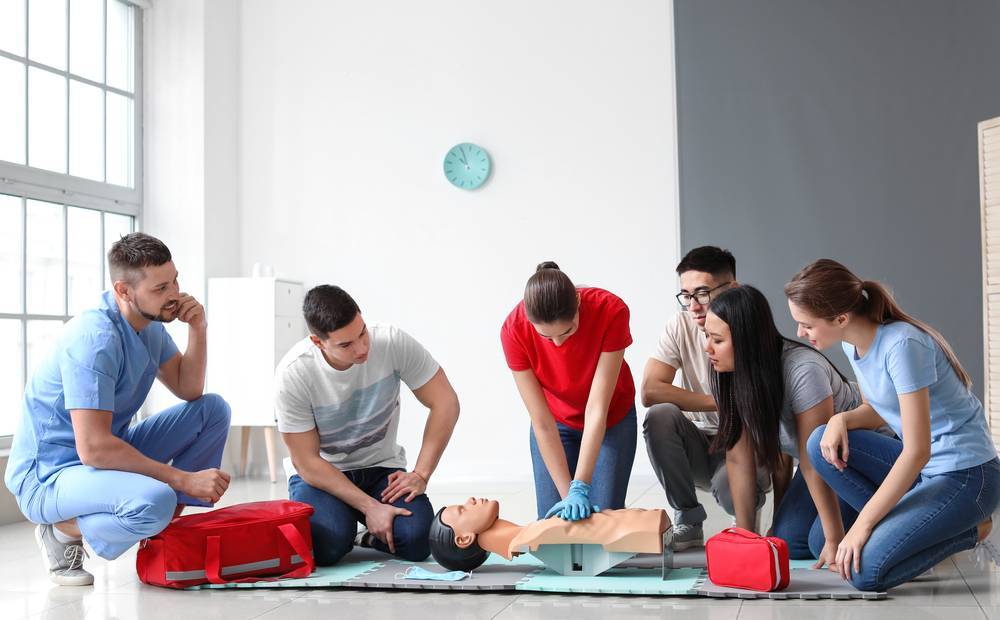First aid is an immediate action after an injury. To highlight its importance and raise awareness, the globe yearly holds IFRC-initiated World First Aid Day.
Every second counts during emergencies or unexpected events that place people’s lives in danger. Learn the importance of First Aid as we celebrate World First Aid Day 2022.
When medical and emergency teams have yet to arrive on the scene of the incident, individuals with first aid knowledge can make a huge difference in the survival of those injured.
It is for this reason that the world yearly celebrates World First Aid Day (WFAD), with various activities being held to raise awareness of the life-saving role of first aid.
The special day is a timely reminder that having basic first aid skills is crucial not only during calamities and disasters but also in everyday life, whether at home, at school, in the neighbourhood or in the workplace.
WFAD’s Birth
A Red Cross survey released in 2019 showed that first aid could prevent 59% of deaths from injuries had it been administered whilst waiting for the arrival of the emergency personnel.
As the first and immediate medical response after an injury, giving first aid is a matter of life and death. It seeks to ease the suffering of people in need of urgent medical attention to increase their chances of survival.
First aid also contributes to community resilience-building efforts. This is pivotal, especially in communities situated in disaster-prone areas.
According to the Global First Aid Reference Centre (GFARC), one of the centres of excellence of the International Federation of Red Cross and Red Crescent Societies (IFRC), integrating first aid into broader developmental strategies could lead to a more self-reliant, more resilient and safer society.
As such, together with the IFRC, GFARC has been working towards providing all people with access to first aid knowledge; and WFAD is an important component of this endeavour.
The IFRC introduced WFAD in 2000 to put first aid in the spotlight for the purpose of people and community empowerment. The world has since been celebrating the occasion every second Saturday of September.
During WFAD, the IFRC and National Societies worldwide engage with more than 23 million people yearly. They teach them how to administer first aid and effectively respond to any eventuality.
This year is no different. At least 100 Red Cross and Red Crescent Societies across the globe, including those based in Asia, will stage diverse creative events to mark WFAD on the 10th of September 2022.
Themed “Lifelong first aid learning,” the 2022 event will emphasise that first aid education, like any other learning, should be a continuing process throughout life. It will also underscore why everyone, from young to old, should learn and have access to first aid.
The Basics
Time is of the essence during emergencies. But there are some basics to remember when assisting the injured or ill until medical help arrives.
On its website, the Singapore First Aid Training Centre, one of the first aid schools in Singapore, lists down the five key things to remember when you see someone in need of medical help. These are:
- Assess the situation and ask if they are ok
- Call the emergency hotline and ask for permission to touch them
- If conscious, ask them about their allergies, current medications and other details that could help the responding medical team. The information you would get may be vital when the team arrives and the person loses consciousness
- Don’t panic and be kind
- Be their steward until help arrives
Home First-Aid Kit
At home, it is smart to have a first-aid kit tucked away in an easily accessible part of your house in case something unexpected happens.
If you are wondering what should be inside your medical kit, the Singapore Red Cross has enumerated the essentials, and some of them are the following:
- Digital thermometer – To check the body temperature
- Crepe roller bandages – to stop the bleeding or limit the swelling
- Shear scissors – To cut bandages or gauze pads
- Safety pins – To be used along with a triangular bandage
- Hypoallergenic tape – To secure the bandages
- Pen torch – To examine the eye
- Disposable gloves – To prevent cross-infection and contamination
You could also include medications for coughs, colds and other ailments, as well as your maintenance drugs and that of your loved ones.
Capacity to Save Lives
Each individual regardless of age has the capacity to help just by knowing and applying first aid knowledge during emergencies.
It not only saves countless lives and establishes more resilient communities. First aid is also building a community of selfless people who can and are willing to act at a time when they are most needed by others. For these reasons alone, learning and relearning first aid is always worth our while.

